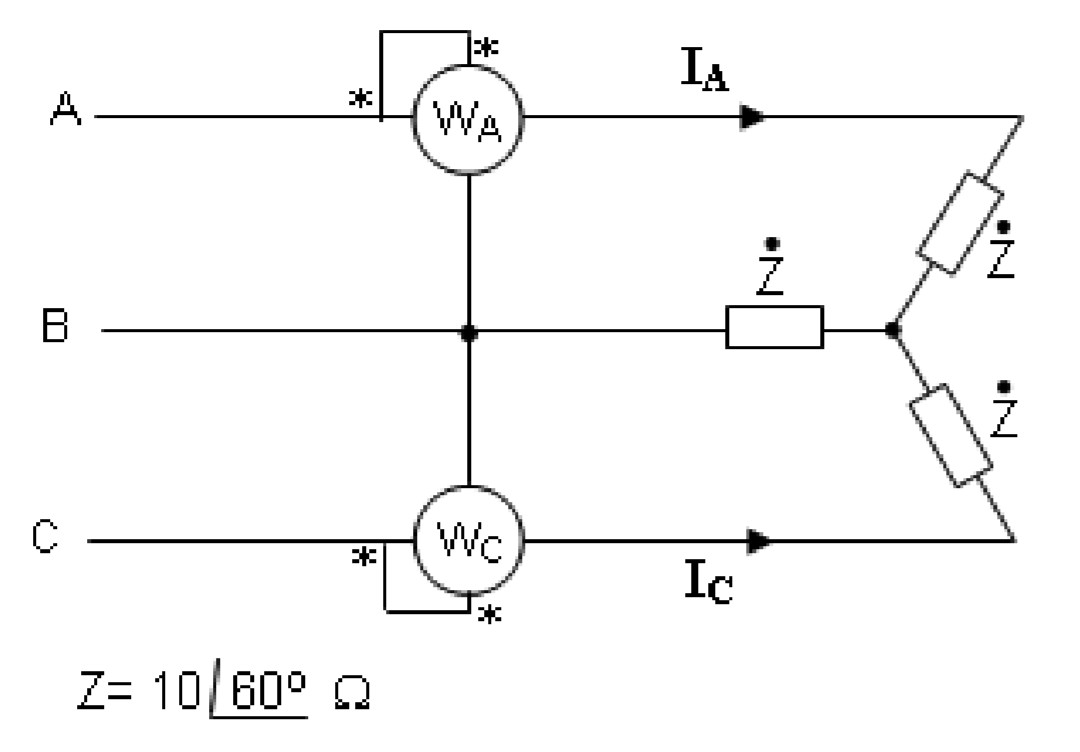
On the above picture, VAB is 380 V, balanced loads.
The right answer says power on Wattmeter A is 0 and power on wattmeter C is 7240 W.
This question came from a previous admission test from a power company
I need help understanding why the zero.
Also, why do I have to ignore the phase of the source ?
The following was edited. See edit history if necessary
I tried:
VAB²/(2*Z)
380<0² / 2*10<60
Which results in 7220 (not 7240, but I believe it's an approach error).
Also, kindly answer another question I made, which I believe is related:
Relation between phase angle and current direction
The answers there don't seem, to my eyes, related to the question. And they came before I enhanced the question.

VAB²/Z + VBC²/Z + VCA²/Zline doesn't look right but your next one does. \$\endgroup\$VAB²/2*Zbecause you're omitting the effect of \$I_C\$ on the Z on line B. Use $$ \frac {\sqrt 3 V_{AB}^2}{Z} $$ (I think!). \$\endgroup\$